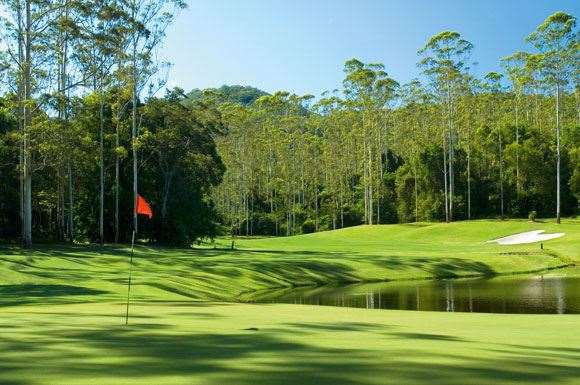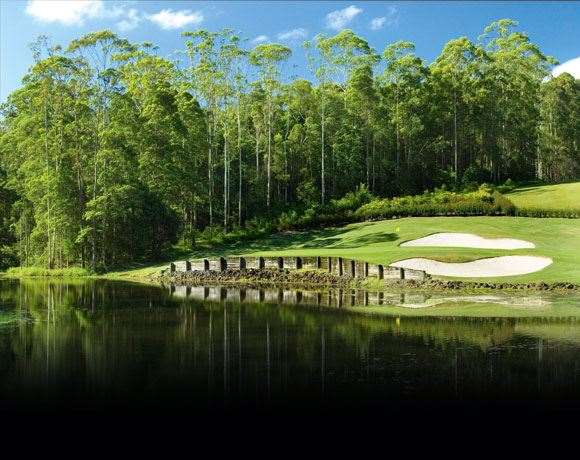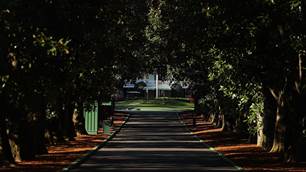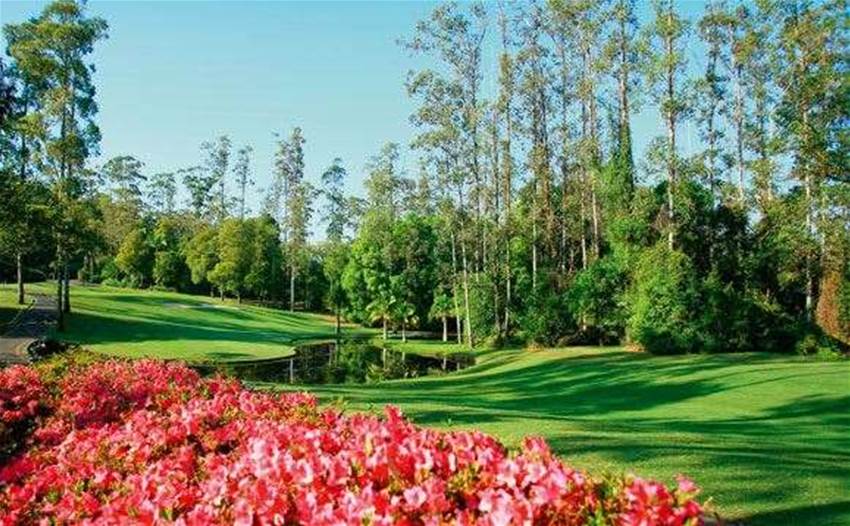Bonville’s the Masters-quality course you play when you’re not playing at the Masters. There’s more to do at Coff's Harbour outside golf than Augusta anyway .
Bonville’s the Masters-quality course you play when you’re not playing at the Masters. There’s more to do at Coff's Harbour outside golf than Augusta anyway .
 Bonville Resort just South of Coffs Harbour
Bonville Resort just South of Coffs HarbourImages: Brendan James, Golf Australia
It’s not the oldest or toughest of the majors, but by virtue of its location in space and time, there’s something undeniably special about the Masters. Always first on the calendar, it’s the ritual end to the eight-month hiatus of major championship golf; an outlet for all that pent-up expectation. And by returning to the same venue every year – it’s the only one of the game’s four most important events to do so – there’s a deep sense of comfort and familiarity. The hallmarks of Augusta National Golf Club – verdant grass, stately rows of trees, blooming flowers, the oasis-like quality
– represent what is for many a golfing ideal.
Many have tried to recreate Augusta, and realised how hard it is to capture the essence of its golfing and aesthetic value. But in the realm of the senses, the Coffs Coast in New South Wales has tapped into that small slice of Georgia, kind of like how every good indie band has a bit of Dylan in it. Bonville isn’t the home of the Masters, to be sure – but play a round here and the golfer can’t avoid impressions of April, green jackets and Greg Norman heartbreaks.
Brad Daymond has a great Augusta story to tell. The enthusiastic Daymond is a Bonville lifer, the club pro the day the place opened in 1992, who has since become the general manager. He recounts the time he got to play Augusta, a singular privilege as the club is intensely private. Every player taking to the course there brings along one of the club’s caddies, who’ll have the odd wager on the players they’re looping for that round. Daymond met his caddy on the practice range where he was warming up; with adrenaline flowing from the anticipation, he was smashing a seven-iron 20m past his normal distance. “My caddy took one look at me and said,” Daymond says, then affecting a perfect Old South accent, “‘Ohh, Mr Daymond, we gonna have a good day today.’”
That could also serve as the motto for Bonville, made into a sign to be posted in the locker room or on the first tee box. For many people, a round at Bonville fulfils the fundamental purpose of a golfing day out. Carved into strands of flooded gums and blackbutt trees, the holes provide the ultimate in seclusion – each group will feel like it’s the only one out on the course. Those golfers, both serious and casual, who value their round as an escape from routine and a chance to commune with nature, with clubs and balls, will find it here. It’s no surprise at all that rugby union’s Wallabies, when they had their base camp in Coffs Harbour from 2003 to ’07, turned the course into one of their regular haunts outside of training.
 Bonville Resort Golf Course Image: Brendan James,Golf Australia
Bonville Resort Golf Course Image: Brendan James,Golf AustraliaAnd the natural space they’ll play through is truly spectacular. Bonville’s been repeatedly recognised as the most beautiful course in the nation, earning the title for best aesthetics in The Golf Course Guide on four occasions, and
the plaudits are well-deserved. Where the future of Australia’s (and the world’s) golf courses is to embrace brown for reasons of sustainability, Bonville will be ever-fertile thanks to the abundant rainfall the area receives. It’s evident with every waterway you cross on the drive here – this place isn’t called the Northern Rivers region for nothing.
The subtropical climate is famously mild, cited by the CSIRO as the most liveable in the country. The whole “mountains-meets-the-sea” element of the Coffs Coast lends Bonville an interesting kind of feel – part tree-lined, inland track of the southern states, part tropical north resort layout.The trees themselves are interesting; enough to catch the attention of the player steaming from having hit his ball into them. Standing narrow and upright, the flooded gums are distinctive when compared to the sprawling, thick-trunk eucalypts which golfers encounter on many other courses around the country. In the background of every shot the rows of trees are pleasing to look at. But as vertical as they are, they also give off the illusion of narrowness in that distant fairway or green, even if the player’s target area is generously wide.
In spring, the azaleas bloom – another touch of Augusta – along with other native flowers, completing the postcard-quality of Bonville. And in keeping with the words of one of the game’s true greats, Walter Hagen, every golfer is behoved to not hurry or worry, and must be sure to smell those flowers along the way.As a test of golf, Bonville is characterised by rolling elevation changes and water features across the layout that the player has to plot around. The bunkering isn’t stern, certainly by Australian standards, but redesign work on the sand traps continues to make them more of a factor. Free swingers will have their chance to blast away, and when players arrive at the 4th, the first par-5 of the round, they’ll see that each of Bonville’s long holes will tempt big hitters to go for the green in two.
 Bonville evergreen...
Bonville evergreen...Image: Brendan James, Golf Australia
The 10th is another of these relatively short par-5s, only 441m, but with water to carry on every shot. This begins a good stretch of holes past the turn: the visually striking par-3 11th, then the long, down-and-around par-4 12th, the toughest hole on the course, finishing on the up ramp of the 13th. The front slope of the green here is insanely fast, the kind of quick putt that fries the nerves of Masters competitors yearly
By the time the player has begun to appreciate Bonville for being its own stimulating round of golf, the 17th comes along and all the Augusta images come flooding back. This neat par-3 pays homage to the famous 12th and 16th holes so decisive at the Masters, a do-or-die carry of 140m to a green angled between front and back bunkers.
With another risk-reward par-5 to finish, the green sitting right under the clubhouse, there’s drama to be had at the end of every round. Striding down the last, it’s hard not to indulge in some fantasising, a la Bill Murray’s Carl Spackler character whacking flowers in Caddyshack (“Tears in his eyes, I guess, as he lines up this last shot ... Cinderella story, out of nowhere”). Even if it’s just to win the skin from the rest of the group before heading to the bar, for every golfer with something at stake on the 18th, there’s a green jacket to win in their own mind.
– Jeff Centenera
Related Articles

Record win leads to major invites in Hong Kong for McKibbin

Australian Open winner will receive invite to The Masters













